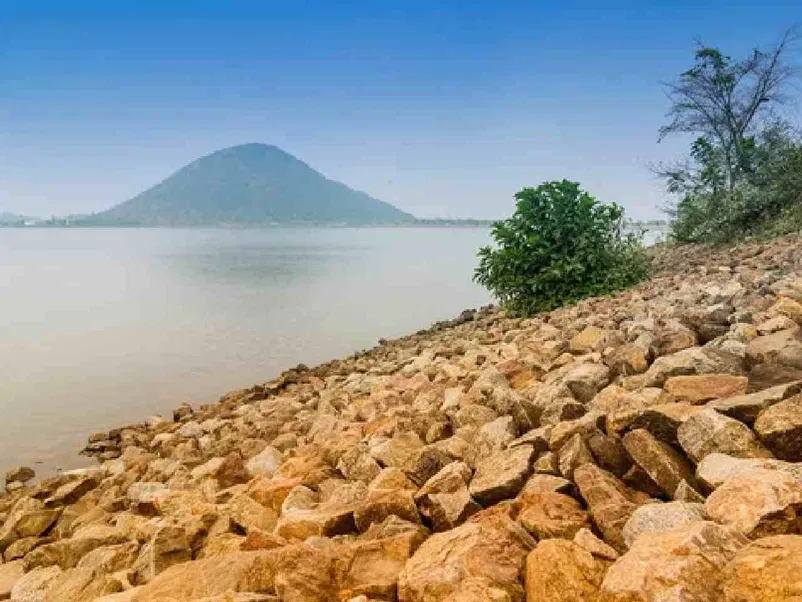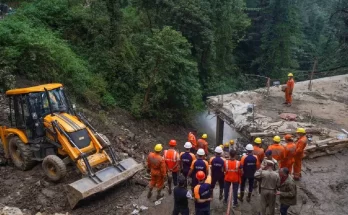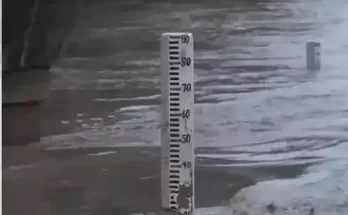Encroachment, defunct water bodies causes of concern in the era of climate change, say experts.

Image for representational purpose only. (Photo Credit: Deposit Photos)
India’s first-ever census of water bodies has revealed that there are more than 24,00,000 water bodies in the country such as ponds, tanks and reservoirs. The biggest area of concern? Experts say more than half of these are under private ownership. Also, of the encroached water bodies, 11.8% have more than 75% area under encroachment.
The 1st Census of Water Bodies, released in March 2023, for the first time, collected information on encroachment of water bodies. A total of 1.6% water bodies out of all the enumerated water bodies are encroached. As many as 95.4% of them are in rural areas and the remaining number in cities. “11.8% of encroached water bodies have more than 75% area under encroachment while 62.8% water bodies have less than 25% area under encroachment,” the Census said, and added: “As many as 16.3% (3,94,500) water bodies are not in use owing to drying up, construction, siltation, destroyed beyond repair, salinity and other reasons.”
More than 50%, i.e. 55.2% (13,38,735) of water bodies are owned by private entities whereas 44.8% (10,85,805) of water bodies are in the domain of public ownership, the report says. Out of all public owned water bodies, maximum water bodies are owned by Panchayats, followed by State Irrigation / State Water Resources Departments. Most of the privately owned water bodies are in the hands of individual owners / farmers, followed by group of individuals and other private bodies such as trusts or temples.
These are the findings of the first ever census of various water bodies carried out by the Ministry of Jal Shakti. Earlier, the Ministry used to carry out only the Minor Irrigation Census. A ‘Water body’ in the document refers to a pond, lake, tank, reservoir or a water conservation structure. Rivers, oceans, lagoons or even covered tanks are not counted.
The objective of the Census of Water Bodies is to develop a national database for all water bodies by collecting information on all important aspects of the subject including their size, condition, status of encroachments, use, storage capacity, status of filling up of storage etc.
“There are 24,24,540 water bodies have been enumerated in the country, out of which 97.1% (23,55,055) are in rural areas and only 2.9% (69,485) are in urban areas. As many as 59.5% (14,42,993) of water bodies are ponds, followed by tanks (15.7%, i.e 3,81,805), reservoirs (12.1%, i.e 2,92,280), water conservation schemes/percolation tanks/check dams (9.3%, i.e 2,26,217), lakes (0.9%, i.e 22,361) and others (2.5%, i.e 58,884),” the Census showed.
It was conducted with the reference year 2017-18 across 33 states and Union Territories except Daman & Diu, Dadra & Nagar Haveli and Lakshadweep. West Bengal has highest number of ponds & reservoirs, whereas Andhra Pradesh has highest number of tanks, Tamil Nadu has highest number of lakes and Maharashtra is the leading state for water conservation scheme with bunds, check dams etc., the Census shows.
Among the total types together, West Bengal has the largest number of water bodies (30.8%; number 7,47,480), followed by Uttar Pradesh (10.1%; number 2,45,087); Andhra Pradesh (7.9%; number 1,90,777), Odisha (7.5%; number 1,81,837) and Assam (7.1%; number 1,72,492), it showed (See table for top 10 states).
Shashi Shekhar, former Secretary, Ministry of Jal Shakti, said, “A realisation has settled (in the government) that we need to protect these water bodies for the sake of groundwater. Because, ultimately, it is the groundwater that will help mitigate the impact of climate change.”
Stating that for better groundwater (levels), the natural recharge system needs to be restored, the floodplains, the catchments, the forests that provides water, the connecting channels, all need to be restored, Shekhar said, “Unfortunately, we don’t yet have a law to protect water bodies that are under Panchayats or other local bodies.”
In the changing climatic conditions, especially when extreme weather events are becoming the new normal, the encroached water bodies or even those dying because of various reasons are a cause of worry, experts pointed out. These also include the water bodies that are privately owned.
V K Madhavan, CEO, Water Aid India, said, with access to piped water, people in general have lost the incentive to protect or conserve the water bodies.“The numerous water bodies along the eastern coast, are a natural storage for fresh water / rain water. That creates a hydrological pressure and prevents salinity ingress. Given the pressures on land, where the water body owner may find the land for the water body turning into a valuable real estate – my concern is if there is any co-relation between saline ingress and the encroachments and degradation of water bodies.”
“Not just in view of the climate change but also in terms of immediate years, this is a cause of concern. The authorities and the communities, both need to ensure that not just the water body but also its catchment, the channels that bring in water, everything is protected,” Madhavan said.
However, not all is lost on the encroachment front. Water User Associations (WUAs) have helped to a large extent in preventing encroachments as they are vigilant and alert. “Out of the 13,64,349 water bodies that are not owned by individual owners, WUAs have been formed in case of 3.1% (42,237) water bodies,” the report pointed out.
Awareness and community participation in restoration and repair of the water bodies will be the key, the experts opined.
(This story first appeared on news9live.com on Apr 28, 2023 and can be read here.)



